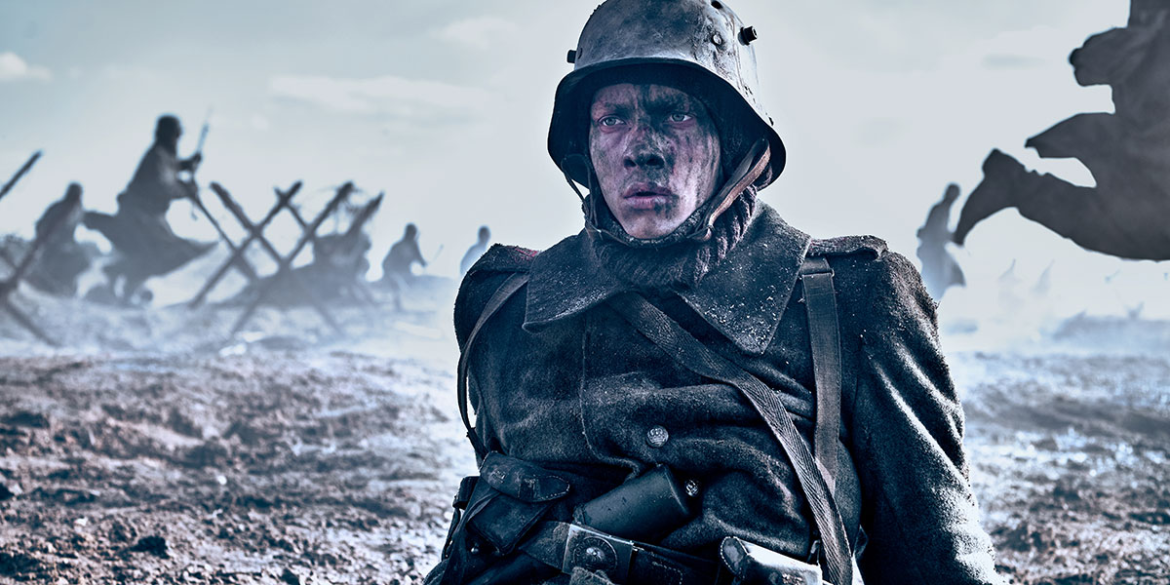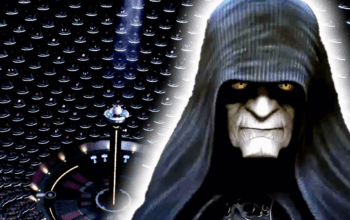Introduction: A Visceral Film with Historical Blind Spots
In November 2022, Netflix released what would be the third film adaptation of All Quiet on the Western Front, based on the landmark World War I novel by German veteran Erich Maria Remarque. The book presents a firmly anti-war stance, following a group of patriotic young German soldiers as they are gradually broken down—physically and emotionally—from the war’s beginning to its bitter end.
Since its publication, the novel has gained international recognition, in part because it was one of the many works banned by the Nazis. Over the decades, it has become one of the quintessential anti-war books of the 20th century. Naturally, this legacy has led to multiple film adaptations: the first in 1930 and another for television in 1979.
What makes the 2022 version so notable is that, for the first time to be done as a completely German production. The previous adaptations were American productions aimed primarily at American audiences. This new version arrives at a particularly relevant moment, as Europe once again witnesses war on its soil with Russia’s ongoing invasion of Ukraine.
The film has been widely praised by critics and general audiences for its unflinching depiction of trench warfare and the mental toll it takes on soldiers. However, it has also drawn criticism from historians and longtime readers of the book for its altered depiction of events and omission of key historical elements. These changes, while cinematic, risk diluting the very themes the story is meant to convey.
Separating Art from History
Before diving into the film’s historical errors, it’s important to acknowledge that All Quiet on the Western Front (2022) is a very good movie on cinematic terms. It powerfully portrays the chaos and brutality of trench warfare, the sense of being trapped in a relentless meat grinder. The performances are immersive and raw, and it’s especially impressive considering the production reportedly cost only around $20 million, a surprisingly low figure for a World War I epic.
The film succeeds in creating atmosphere and visceral realism on a modest budget. Production designer Christian Goldbeck and his team built massive trench systems across Czech Republic locations, working with hundreds of extras, stunt teams, and scenic crews to replicate battlefield authenticity. Cinematography, sound, and editing consistently earned praise for immersing viewers in the grim reality of war.
However, the purpose of this article isn’t to critique the film’s artistic merits. Instead, it’s to flag key inaccuracies that ultimately undermine its own anti-war message—that war is indiscriminate, dehumanizing, and devoid of heroism.
When a story aims to condemn war, credibility matters. If historical context is skewed or simplified, the film risks dissolving its critique into nihilism rather than a grounded anti-war statement.
Shifting the Timeline: Enthusiasm in the Wrong Era
One of the core issues with the 2022 adaptation appears right at the beginning. Both the original All Quiet on the Western Front novel and its earlier film versions begin in 1914, at the start of the war. A key element of the story is the wave of nationalistic fervor that swept over Germany. These were teenagers—schoolboys—convinced by their teachers, parents, and national propaganda that they would become heroes.
One moment that stands out in the book, which is also depicted in the film, is when their professor gives a great speech about the importance of “defending the fatherland”, confidently tells them they’ll be marching into Paris within a few weeks. This blind optimism wasn’t unique to Germany—every major power at the start of WWI believed they’d win quickly. The phrase “home by Christmas” became tragically ironic across Europe. That hopeful, patriotic mentality makes perfect sense in 1914.
But the 2022 film instead opens in spring 1917, three years into the war. At that Point, Germany was in a very different state. When Germany had already been bled dry. Domestically, the country was collapsing. A British naval blockade had caused widespread starvation. The army was seizing livestock to feed the front lines. Civilians were rioting over food, workers were striking, and revolution was brewing. The military was no longer relying on eager volunteers—it was conscripting young men out of necessity.
Portraying the characters as still brimming with patriotic excitement in 1917 makes about as much sense as President Bush declaring “Mission Accomplished” in 2006—long after the illusion of a quick war had shattered. There should be fear and anxiety on these boys’ faces, not schoolboy eagerness.
We’re seeing a real-world parallel right now in Russia. Their government promised a lightning invasion of Ukraine, and within a year, they were facing mass conscription protests. If morale can collapse that fast in modern warfare, imagine how disillusioned German youth must have been after three years of trench horror.
Remarque’s original novel captures this disillusionment as a process: it begins with hope and systematically tears it away. The 2022 adaptation skips that arc entirely. By starting in 1917, it inserts nationalistic enthusiasm into a time when very little of it still existed. This choice not only undermines the emotional realism but also cuts out the wider social context. In the novel, there’s a powerful sequence where Paul returns home on leave, only to find everything changed—his family, neighbors, even the professor who encouraged him to enlist. In other adaptations, we see Paul confront that professor and warn his students not to make the same mistake.
Moments like that emphasize just how deeply the war transforms a person. giving emotional and political depth to Paul’s journey—something the 2022 film sorely lacks.
By skipping over those critical first three years, the film removes crucial context—not just for the war, but for the entire psychological trajectory of its characters.
The Final Suicide Charge: A Fictionalized Ending
One of the most egregious liberties the 2022 remake takes is in its ending. The film there’s a German general—meant to embody the rigid, aristocratic officer class—who, upon hearing that an armistice has been signed, orders his exhausted troops to launch one last assault before the 11:00 a.m. ceasefire. His motive is purely ego: to “go out with honor,” even if it costs lives.
Thematically, this character is supposed to represent the militarist mindset that helped lay the groundwork for the postwar “stab-in-the-back” myth—a conspiracy embraced by future German military leaders and the Nazis, claiming that the army had not been defeated in the field but betrayed by politicians at home. It’s a potent symbol on paper, but the attack as depicted on screen, is patently false.
While it is true that there were assaults in the final hours before the armistice took effect, most last-minute offensives were carried out by the Allies, particularly American forces, who pushed to seize as much ground as possible before the deadline, by November 1918, the German army was on the verge of collapse: mutinies were breaking out in the navy, soldiers were deserting, and revolution was spreading through German cities. The military was in no position to launch grand suicidal charges for glory.
By showing the Germans as initiating a reckless, last-minute attack, the film not only distorts reality but also leans into a tired stereotype of blind Teutonic militarism. In reality, the tragedy of the final day was that dying often happened for nothing, regardless of which side pulled the trigger.
Ironically, the filmmakers could have created this same scenario by sticking closer to history. Imagine if Paul—already hollowed out by years of loss—is shocked along with his fellow soldiers to see a French assault on their trench the minutes before the ceasefire, fighting only to survive, and dying just as the guns finally fell silent. That would have been both historically accurate and showing that in war, death does not care which side you are on when the clock runs out.
This change is perhaps the film’s most glaring inaccuracy because it reframes Germany as the sole aggressor, ignoring other factors done by the Allies that inevitably led to the rise of the Nazi’s.
The biggest problem with this ending is that it takes away the far more complex and tragic truth the book was going for.
Conclusion
All Quiet on the Western Front (2022) is what happens when a nation’s collective war guilt shapes the script. Rather than presenting an honest depiction of the First World War from the German soldiers’ perspective, it deliberately alters or omits key realities.
It’s important to acknowledge that Germany was indeed the aggressor in 1914, yet the story of the war’s end is more complex. The harsh terms of the Treaty of Versailles, combined with years of blockade and starvation, left ordinary Germans—many of whom were barely adults when they enlisted—just as many victims of the war as they were participants. By erasing the internal collapse, the mutinies, the film oversimplifies Germany’s role in the war. It replaces whatever nuance with more familiar clichés.
It is a well-made film, visually and emotionally powerful, but not the flawless masterpiece many claim it to be. Inaccuracies can be forgiven when they serve the narrative truth of a story—but here, the changes often cheapen the original message. The real All Quiet is about the slow grinding away of youth and hope until nothing is left. By reshaping history for dramatic effect, the 2022 version risks spreading more ignorance about the First World War and, ironically, reigniting the very myths it claims to condemn.



